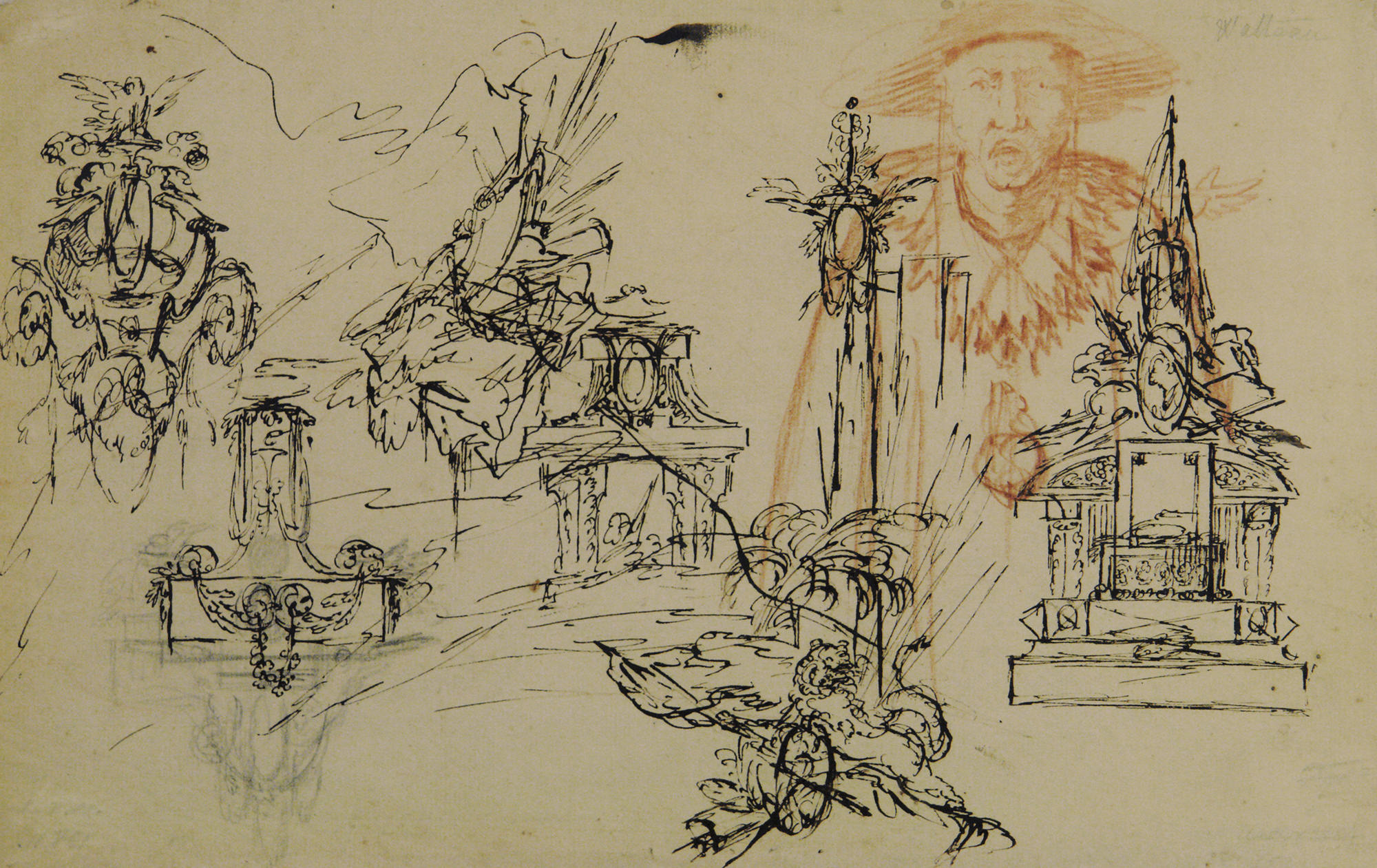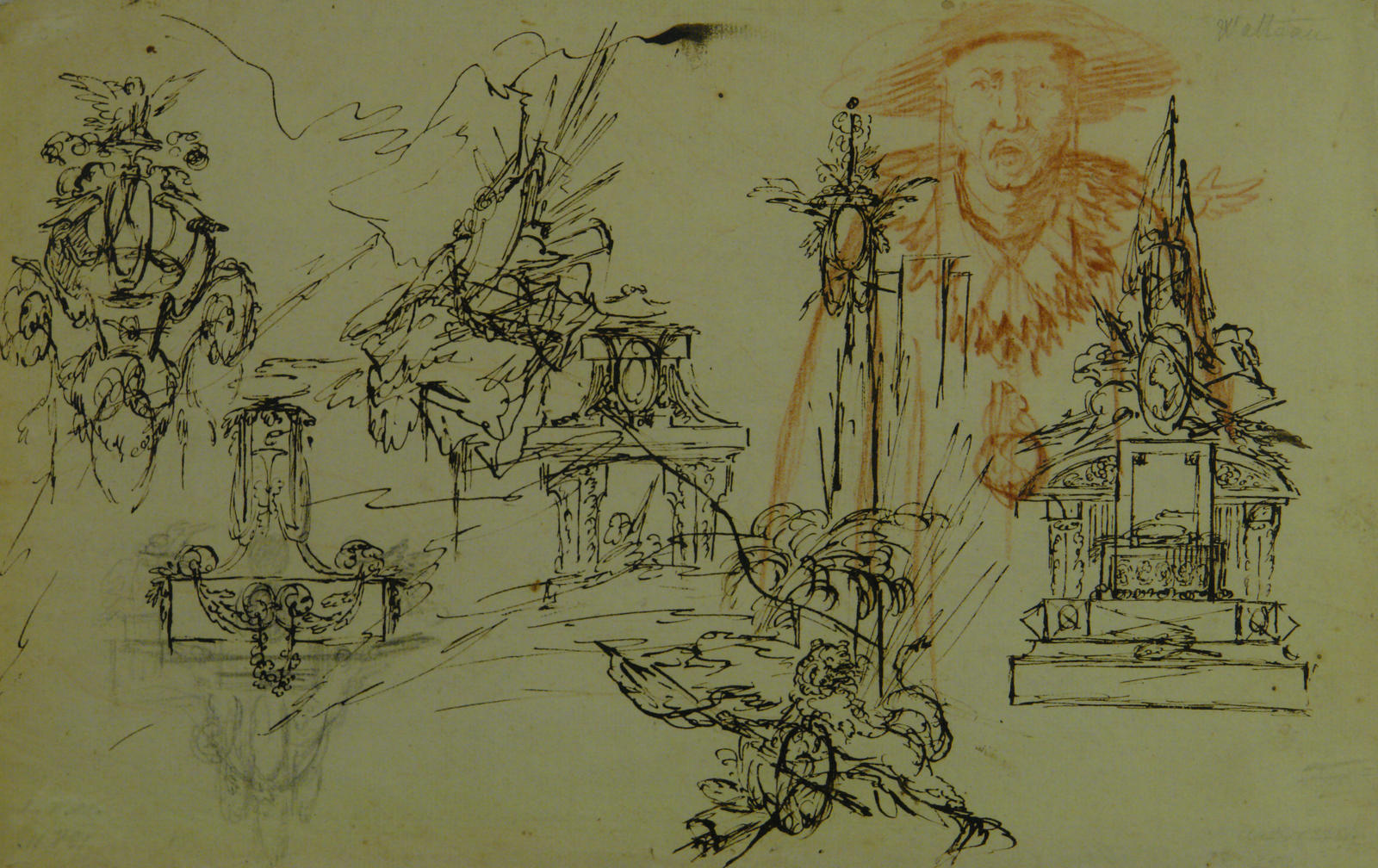The peculiarity of the graphic art collection in the Kaluga Regional Museum of Fine Arts is explained by the museum history. Back in 1920s, at the time of its establishment, the museum was stocked primarily by the works of art requisitioned from the estates of Russian noblemen. Hence, the better part of the museum’s collection came from old manor houses.
All the sheets from the West European graphic art collection (with a small exception) were delivered to the museum in 1919 from the Baryatino estate, Kaluga province, as part of a private art collection owned by the prince Gorchakov family. The small sheet of sketches is the work of 18th century French painter Antoine Watteau. Most of the drawings are in China ink and the male half-figure in the right side is in red chalk.
Watteau’s artistic career started with arabesque (name given by Europeans to an intricate ornamental design of geometrical lines intertwined with floral elements) and copy making. Coming to Paris in 1702 he saw canvases painted by Rubens whose influence on Watteau has been noted by all art critics.
All the sheets from the West European graphic art collection (with a small exception) were delivered to the museum in 1919 from the Baryatino estate, Kaluga province, as part of a private art collection owned by the prince Gorchakov family. The small sheet of sketches is the work of 18th century French painter Antoine Watteau. Most of the drawings are in China ink and the male half-figure in the right side is in red chalk.
Watteau’s artistic career started with arabesque (name given by Europeans to an intricate ornamental design of geometrical lines intertwined with floral elements) and copy making. Coming to Paris in 1702 he saw canvases painted by Rubens whose influence on Watteau has been noted by all art critics.
His first works were decorative paintings and later in his career the artist continued to decorate walls, harpsichords, coaches, folding screens, and fans with arabesques. Rocaille (ornament) is one of most interesting European art styles. It originated in the first third of the 18th century in France and soon became popular across Europe.
The most fashionable interior design at the time was to decorate walls, ceilings and door folds with panel painting. Watteau’s innovation was the merge of a narrative and ornamental motifs. The dominant theme of his portrait pictures, every-day-life, and theatrical scenes are “gallant parties”. In addition to drawings Watteau made multiple sketches for future painting. He penciled one model from multiple angles, elegant ladies’ heads, profiles, drapery studies, single hands to pick the only version he needed for the painting. Most of the ornaments and motifs designed by Antoine Watteau became part of the 18th century décor. He may be considered one of the founders of the Rococo style in art.



